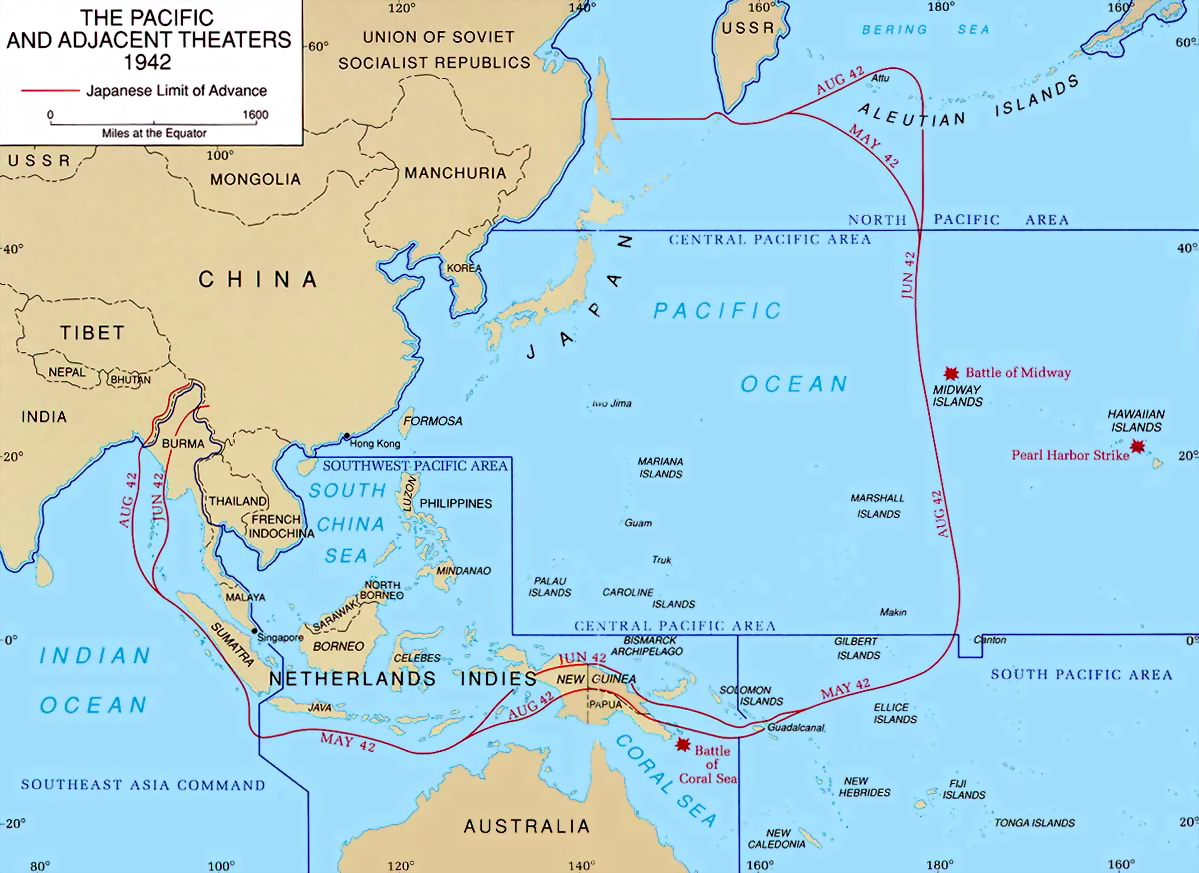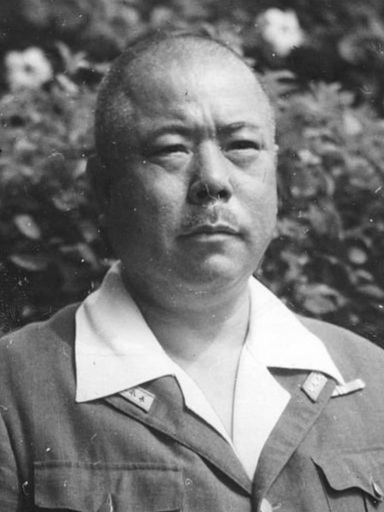|
Mutaguchi Renya
Lieutenant-General was an Imperial Japanese Army officer who served in World War II. He was the field commander of Japanese forces during the Battle of Imphal. Biography Mutaguchi was a native of Saga Prefecture. He graduated from the 22nd class of the Imperial Japanese Army Academy in 1910 and from the 29th class of the Army Staff College in 1917. Mutaguchi served in the Japanese forces with the Siberian Intervention against the Bolshevik Red Army in the Russian Far East. Afterwards, he was sent as a military attaché to France. Promoted to major in 1926 and colonel in 1930, from 1933–1936 he served in the General Affairs Section of the Imperial Japanese Army General Staff in Tokyo, before being transferred to China in 1936 to take command of the Japanese garrison force in Beijing. He was commander of the IJA 1st Infantry Regiment in China from 1936–1938. Units responsible to Mutaguchi were involved in the Marco Polo Bridge Incident of 7 July 1937, which helped launch ... [...More Info...] [...Related Items...] OR: [Wikipedia] [Google] [Baidu] |
Saga Prefecture
is a Prefectures of Japan, prefecture of Japan located on the island of Kyushu. Saga Prefecture has a population of roughly 780,000 and has a geographic area of . Saga Prefecture borders Fukuoka Prefecture to the northeast and Nagasaki Prefecture to the southwest. Saga (city), Saga is the capital and largest city of Saga Prefecture, with other major cities including Karatsu, Saga, Karatsu, Tosu, Saga, Tosu, and Imari, Saga, Imari. Saga Prefecture is located in the northwest of Kyūshū covering an isthmus-like area extending between the Sea of Japan and the Ariake Sea. Saga Prefecture's western region is known for the production of Ceramic art, ceramics and porcelain, particularly in the towns of Karatsu, Imari, and Arita, Saga, Arita. History In ancient times, the area composed by Nagasaki Prefecture and Saga Prefecture was called Hizen Province. The current name dates from the Meiji Restoration. Rice farming culture has prospered here since ancient times, and vestiges can ... [...More Info...] [...Related Items...] OR: [Wikipedia] [Google] [Baidu] |
France
France, officially the French Republic, is a country located primarily in Western Europe. Overseas France, Its overseas regions and territories include French Guiana in South America, Saint Pierre and Miquelon in the Atlantic Ocean#North Atlantic, North Atlantic, the French West Indies, and List of islands of France, many islands in Oceania and the Indian Ocean, giving it Exclusive economic zone of France, one of the largest discontiguous exclusive economic zones in the world. Metropolitan France shares borders with Belgium and Luxembourg to the north; Germany to the northeast; Switzerland to the east; Italy and Monaco to the southeast; Andorra and Spain to the south; and a maritime border with the United Kingdom to the northwest. Its metropolitan area extends from the Rhine to the Atlantic Ocean and from the Mediterranean Sea to the English Channel and the North Sea. Its Regions of France, eighteen integral regions—five of which are overseas—span a combined area of and hav ... [...More Info...] [...Related Items...] OR: [Wikipedia] [Google] [Baidu] |
Battle Of Singapore
The fall of Singapore, also known as the Battle of Singapore, took place in the South–East Asian theatre of the Pacific War. The Empire of Japan captured the British stronghold of Singapore, with fighting lasting from 8 to 15 February 1942. Singapore was the foremost British military base and economic port in South–East Asia and had been of great importance to British interwar defence strategy. The capture of Singapore resulted in the largest British surrender in history. Before the battle, Japanese General Tomoyuki Yamashita had advanced with approximately 30,000 men down the Malayan Peninsula in the Malayan campaign. The British erroneously considered the jungle terrain impassable, leading to a swift Japanese advance as Allied defences were quickly outflanked. The British Lieutenant-General, Arthur Percival, commanded 85,000 Allied troops at Singapore, although many units were under-strength and most units lacked experience. The British outnumbered the Japanese but mu ... [...More Info...] [...Related Items...] OR: [Wikipedia] [Google] [Baidu] |
Invasion Of Malaya
The Malayan campaign, referred to by Japanese sources as the , was a military campaign fought by Allied and Axis forces in Malaya, from 8 December 1941 – 15 February 1942 during the Second World War. It was dominated by land battles between British Commonwealth army units and the Imperial Japanese Army, with minor skirmishes at the beginning of the campaign between British Commonwealth and Royal Thai Police. The Japanese had air and naval supremacy from the opening days of the campaign. For the British, Indian, Australian, and Malayan forces defending the colony, the campaign was a total disaster. The operation is notable for the Japanese use of bicycle infantry, which supposedly allowed troops to carry more equipment and swiftly move through thick jungle terrain. Royal Engineers, equipped with demolition charges, destroyed over a hundred bridges during the retreat, yet this did little to delay the Japanese. By the time the Japanese had captured Singapore, they had suffered ... [...More Info...] [...Related Items...] OR: [Wikipedia] [Google] [Baidu] |
18th Division (Imperial Japanese Army)
The was an infantry division of the Imperial Japanese Army. Its tsūshōgō code name was the . The 18th Division was one of two infantry divisions newly raised by the Imperial Japanese Army immediately after the Russo-Japanese War (1904–1905) as part of the post war expansion of the standing Japanese military. The division received its colors on 13 November 1907. Its original headquarters was in a suburb of the city of Kurume in Fukuoka Prefecture. Action In World War I the division was strengthened by an additional infantry brigade (the IJA 29th Brigade) and, led by Lieutenant General Kamio Mitsuomi, was given an independent command in the Siege of Qingdao of the German colony of Qingdao in the Shandong peninsula, China in October 1914, forcing a surrender of German forces after a week-long assault. Notably, an aircraft from divisional air force has become the first airplane ever downed in the air-to-air combat. However, on 1 May 1925, the division was dissolved b ... [...More Info...] [...Related Items...] OR: [Wikipedia] [Google] [Baidu] |
Pacific War
The Pacific War, sometimes called the Asia–Pacific War or the Pacific Theatre, was the Theater (warfare), theatre of World War II fought between the Empire of Japan and the Allies of World War II, Allies in East Asia, East and Southeast Asia, the Pacific Ocean, Pacific and Indian Oceans, and Oceania. It was geographically the largest theatre of the war, including the Pacific Ocean theater of World War II, Pacific Ocean theatre, the South West Pacific theater of World War II, South West Pacific theatre, the Second Sino-Japanese War, and the brief Soviet–Japanese War, and included some of the Largest naval battle in history, largest naval battles in history. War between Japan and the Republic of China (1912–1949), Republic of China had begun in 1937, with hostilities dating back to Japanese invasion of Manchuria, Japan's invasion of Manchuria in 1931, but the Pacific War is more widely accepted to have started in 1941, when the United States and United Kingdom entered the ... [...More Info...] [...Related Items...] OR: [Wikipedia] [Google] [Baidu] |
Fourth Army (Japan)
The was an army of the Imperial Japanese Army based in Manchukuo from the Russo-Japanese War until the end of World War II. History Russo-Japanese War The Japanese 4th Army was initially raised on June 24, 1904, in the midst of the Russo-Japanese War under the command of General Nozu Michitsura out of various reserve elements, to provide support and additional manpower in the Japanese drive towards Mukden in the closing stages of the war against Imperial Russia. It was disbanded at Mukden on January 17, 1906, after the signing of the Treaty of Portsmouth and the end of the war. Second Sino-Japanese War After the start of the Second Sino-Japanese War, the Japanese Fourth Army was raised again as a garrison force to guard the northern borders of Manchukuo against possible incursions by the Soviet Red Army. It was based at Bei'an, the capital of a northern Manchukuo province of the same name, that was heavily fortified with various ground emplacements. The Fourth Army afterwards ... [...More Info...] [...Related Items...] OR: [Wikipedia] [Google] [Baidu] |
Chief Of Staff (military)
The title chief of staff (or head of staff) identifies the leader of a complex organization such as the armed forces, institution, or body of persons and it also may identify a principal staff officer (PSO), who is the coordinator of the supporting staff or a primary aide-de-camp to an important individual, such as a president, or a senior military officer, or leader of a large organization. In general, a chief of staff provides a buffer between a chief executive and that executive's direct-reporting team. The chief of staff generally works behind the scenes to solve problems, mediate disputes, and deal with issues before they are brought to the chief executive. Often chiefs of staff act as a confidant and advisor to the chief executive, acting as a sounding board for ideas. Ultimately the actual duties depend on the position and the people involved. Civilian Government Australia * Chief of Staff to the Prime Minister Brazil * Chief of Staff of the Presidency Canada * ... [...More Info...] [...Related Items...] OR: [Wikipedia] [Google] [Baidu] |
Beijing
Beijing, Chinese postal romanization, previously romanized as Peking, is the capital city of China. With more than 22 million residents, it is the world's List of national capitals by population, most populous national capital city as well as China's List of cities in China by population, second largest city by urban area after Shanghai. It is located in North China, Northern China, and is governed as a Direct-administered municipalities of China, municipality under the direct administration of the Government of the People's Republic of China, State Council with List of administrative divisions of Beijing, 16 urban, suburban, and rural districts.Figures based on 2006 statistics published in 2007 National Statistical Yearbook of China and available online at archive. Retrieved 21 April 2009. Beijing is mostly surrounded by Hebei Province and neighbors Tianjin to the southeast; together, the three divisions form the Jing-Jin-Ji, Jing-Jin-Ji cluster. Beijing is a global city and ... [...More Info...] [...Related Items...] OR: [Wikipedia] [Google] [Baidu] |
Republic Of China (1912–1949)
The Republic of China (ROC) began on 1 January 1912 as a sovereign state in mainland China following the 1911 Revolution, which overthrew the Manchu people, Manchu-led Qing dynasty and ended China's imperial China, imperial history. From 1927, the Kuomintang (KMT) Northern expedition, reunified the country and initially ruled it as a one-party state with Nanjing as the national capital. In 1949, Nationalist government, the KMT-led government was defeated in the Chinese Civil War and lost control of the mainland to the Chinese Communist Party (CCP). The CCP Proclamation of the People's Republic of China, established the People's Republic of China (PRC) while the ROC was forced to Retreat of the government of the Republic of China to Taiwan, retreat to Taiwan; the ROC retains control over the Taiwan Area, and political status of Taiwan, its political status remains disputed. The ROC is recorded as a founding member of both the League of Nations and the United Nations, and previous ... [...More Info...] [...Related Items...] OR: [Wikipedia] [Google] [Baidu] |




